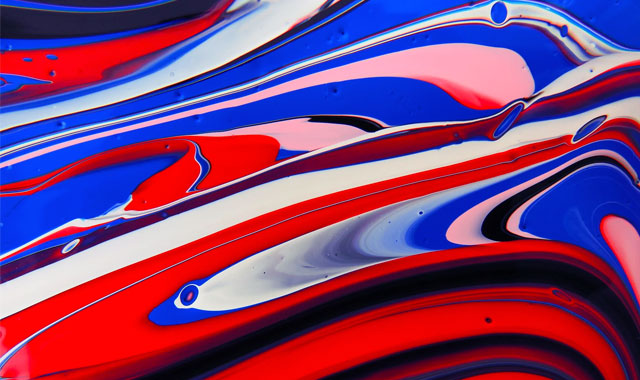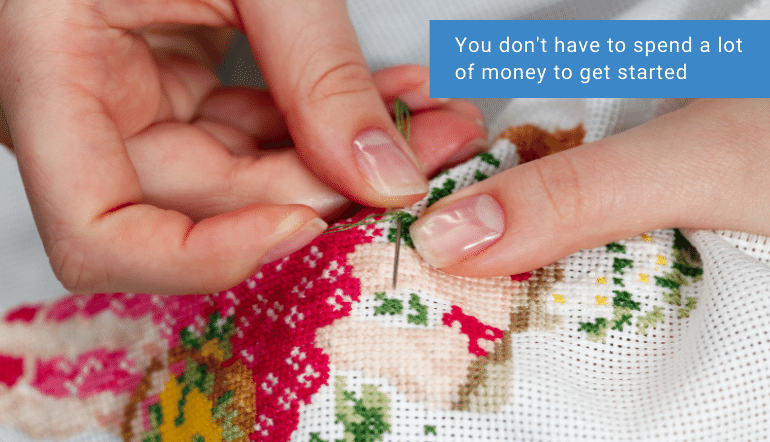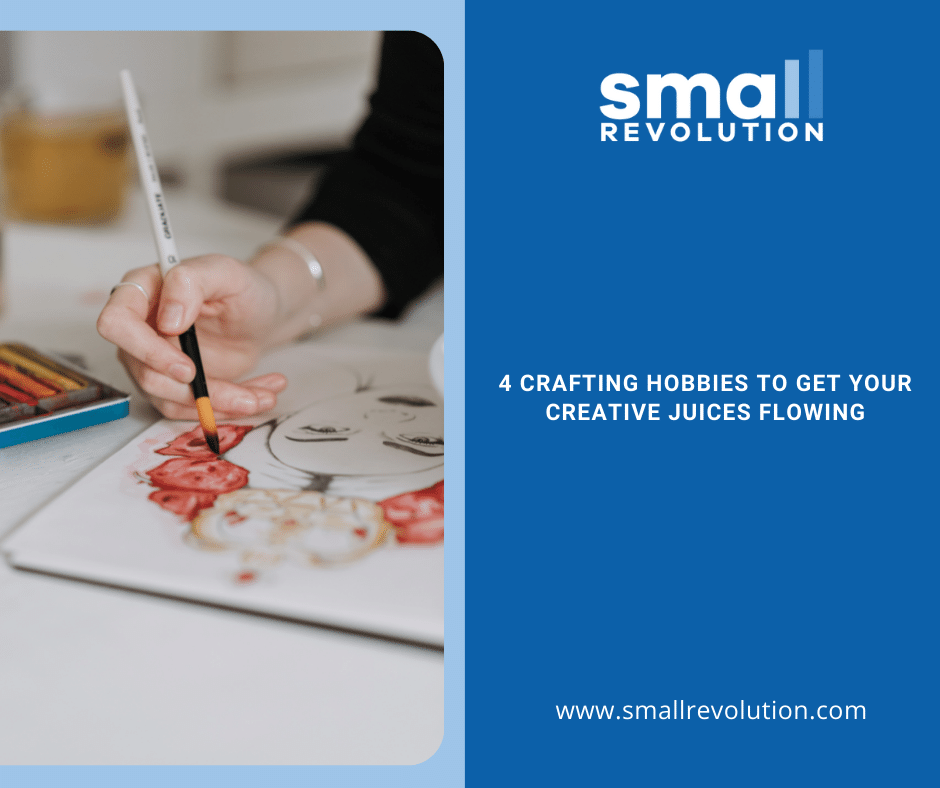There’s something deeply satisfying about the process of creating and seeing the result of your hard work.
Crafting hobbies are ideal for fueling your life while providing a stress-relieving break from the everyday grind and helping you meet new people.
Crafts make us feel rooted, give us a sense of belonging and connect us with our history…
Phyllis George
It can be daunting to find the perfect crafting hobby with so many options available. We’ve assembled a list of crafting hobbies to get your creative juices flowing. They include:
- Hand lettering
- Painting
- Needlework
- Weaving pictures
Whether you’re looking for some solo time or want to make new items, these crafting hobbies will help you connect with your creative side and give you something fun to do in your spare time.
1: Hand Lettering
Hand lettering is a beautiful way to express yourself. It’s not only about letters and words but about creating something with your hands that expresses your creativity and style.
What’s the best part?
It doesn’t require any fancy equipment. All you need to get started is a blank piece of paper, a pencil, and a pen (or marker).
Hand lettering is often confused with calligraphy, but they’re not the same.
The table below shows their difference:
| Hand Lettering | Calligraphy |
| Illustrates words and letters | Describes a character or scene |
| Fewer rules on how you utilize particular styles | Many rules on how you use specific styles |
| Each letter you write has a unique composition | Depends on rote practice |
| Uses a pen and paper | Uses a specialized brush or pen |
| Cursive letters mustn’t be perfect and fancy | Cursive writing must be perfect and beautiful |
There are different styles of hand lettering. The most popular ones include:
- Serifs. Serifs are the little lines that stick out of the ends of letters. Serif fonts are more traditional and classic and are often used in print design. They’re also incredibly legible in smaller sizes.
- Sans Serif. Sans serif fonts don’t contain those little lines at the end of each letter. Instead, they’re plain and simple in design.
- Script. Script fonts mimic the flowy nature of cursive handwriting. They have varying “heights” within the letters (tall ascenders and short descenders) and have lots of loops and swashes to give them a more elegant appearance.
If you aren’t sure how to do hand lettering, here’s a simple guide to help you:
- Choose a hand lettering style for the word you wish to use.
- Get inspiration for your work from online sites like Pinterest.
- Develop powerful ideas from thumbnail sketches.
- Keep your letters nice and consistent by drawing your guidelines.
- Start sketching and ensure your letterforms are consistent and the letters are properly shaped.
- Ink the sketch and allow it to dry.
- The last step is to remove the pencil marks.
2: Painting

Painting is one of the most popular hobbies for adults and children. This pastime is a great way to express yourself, and no matter what you’re painting, you can’t go wrong.
How to Paint
One of the best things about painting is how easy it is to get started. Just follow these simple steps:
- Prepare the surface you want to paint. Paint won’t stick to dirty or glossy surfaces, so be sure to use a heavy-duty cleaner and then sand before you start.
- Prime the surface. Primer provides the best coverage for light colors, such as white, tinted, and pastel hues. It also seals the surface so paint won’t soak in and dull over time.
- Apply the paint. Use a high-nap roller to minimize splatter and a brush to cut in at the edges. Work from top to bottom and from corner to corner, blending each stroke into the last.
Painting Techniques
These are some of the most common painting techniques:
Washes. They’re very popular among painters. A wash is a very thin layer of paint applied to a surface. You can achieve this by diluting your paint before applying it to your canvas or other surfaces.
Washes are often used to create a light look and feel to paintings, as they tend to add depth and shadows to the subjects.
Blending. This is another common technique in which two or more colors are mixed to produce a new shade. With this technique, you can create stunning effects with just about any color combination.
Dry brushing. This method involves applying your paint with a dry brush to produce texture and add detail to your subject matter. The technique is often used for landscape paintings because it creates the illusion of trees and other elements that have been weathered by time or elements such as snowfall and rain showers.
3: Needlework
Needlework has been around for centuries and is still as popular now. Each needlework project is unique and individual to the crafter.
You don’t have to spend a lot of money to get started and can find great deals on crafting supplies at your local store or craft shop.

Watch this video for some needlework inspiration.
With different types of needlework, you can personalize your projects and create something unique to last a lifetime. Make gifts for others or create things to use around the house.
Different Types of Needlework
- Knitting. Knitting is one of the most popular types of needlework. It’s done by making stitches with two knitting needles to form a piece of fabric. You can use yarn or thread to make different pieces such as sweaters, blankets, and other items.
- Crocheting. Crocheting is similar to knitting but uses a single crochet hook instead of two needles. This allows crocheters to create fabrics with a different appearance.
- Cross-stitching. Cross-stitching involves working with thread instead of yarn. Here, you stitch in an x pattern over a design on fabric or canvas to create an image or design.
- Needlepoint. Here, threads are stitched into canvas or embroidery fabric. It differs from cross-stitching because it uses smaller stitches over the entire canvas rather than x patterns across the material.
4: Weaving Pictures
The art of weaving pictures using a loom goes back thousands of years. Woven images were used to tell stories and create art in many cultures. As time passed, the craft became more sophisticated.
Today, weavers use all kinds of fibers, techniques, and tools to produce beautiful works. One method is known as tapestry weaving. This technique involves creating an image or pattern by weaving colored wool into the warp threads on a loom.

The final product resembles a picture and is unique because it’s been woven rather than painted or printed.
How do you weave a picture?
A Step-by-Step Guide to Weaving a Picture
- Gather your supplies. You need yarn, a loom, a stick, or a piece of cardboard for making fringe and scissors.
- Wind the yarn around the pegs in a circle. You can use any color or pattern and do as many rows as you like.
- Pull the upper strand from left to right with the tapestry needle. Pull the lower strand in an alternating pattern from right to left. The loop will stay on the peg until you unpick it later.
- Keep weaving until you get close to the end of the bottom row, then cut off your yarn and tie it around one of the bottom loops to secure it. Then carefully unpick all of your loops from the pegs and remove them from the loom. Use scissors to make sure they’re all cut evenly at the same point.
Over to You
These hobbies will keep your hands busy while letting your imagination run wild. They’re a great way to turn a boring task into something enjoyable or kickstart your imagination and get it flowing. You can teach yourself these hobbies and earn an income simultaneously.
If you don’t have the money (or time) to invest in handmade goods, consider picking up a book about one of these crafts and give yourself some ideas for future projects.
Do you want to encourage your creativity with business ideas?
Visit Small Revolution for some inspiration.
Frequently Asked Questions
What is a creative hobby?
A creative hobby is an activity that allows you to express yourself. It’s a way to channel your imagination, where you can let your mind wander and get lost in the process. Creative hobbies can be anything from painting or drawing to making something from scratch.
How do you find a new creative hobby?
Find out what your passions are by taking classes. You could take a baking, painting, or dancing class to help you discover what you enjoy.
Do I need a creative hobby?
Yes. It’s beneficial to your brain to learn a new creative hobby. Creating new neural connections through a creative hobby can prevent cognitive decline, improving cognitive performance.
Share on Facebook:


